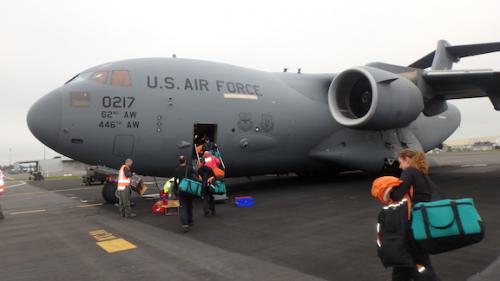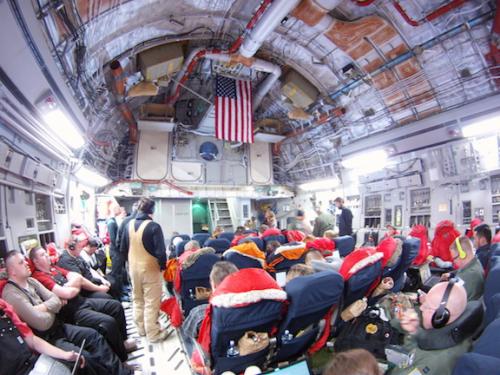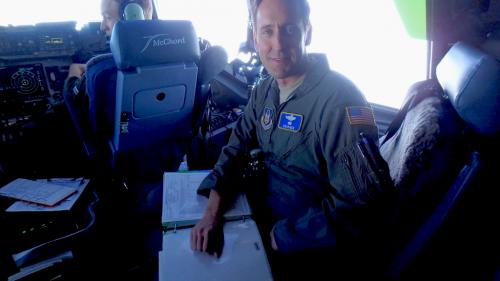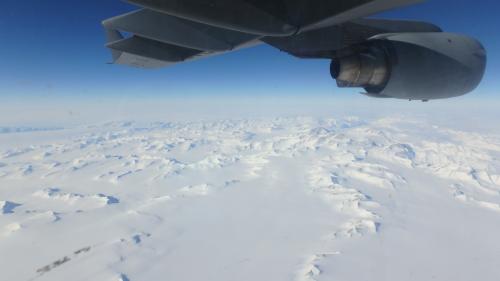 The C-17 Globemaster III is the four engine jet that Operation Deep Freeze uses to transport personnel and material to McMurdo Station.
The C-17 Globemaster III is the four engine jet that Operation Deep Freeze uses to transport personnel and material to McMurdo Station.
Hitching a ride on a C-17 Globemaster III is unlike any plane flight I've ever taken. While it doesn't look much larger than a conventional airliner from the outside, the interior is positively cavernous. Rows and rows of seats fill the forward portion of the cargo hold while our baggage and supplies have been "palletized" and placed in huge crates at the rear of the plane. The second detail that strikes me are all the cables, wires, and pipes lining the interior of the fuselage. This plane wasn't designed with many human comforts in mind (though there is, of course, a lavatory). Except for a tiny porthole in each of the exterior doors, there aren't even any windows to look out of. Finally, it's really loud; everyone is issued earplugs before boarding because the C-17 isn't soundproofed the same way commercial aircraft are.
 The massive C-17 can carry even more cargo weight by foregoing some of the creature comforts expected in civilian air travel.
The massive C-17 can carry even more cargo weight by foregoing some of the creature comforts expected in civilian air travel.
After an hour or so of excited anticipation (it's the first time to Antarctica for many of us aboard), people settle into books, music, or naps and I take the crew up on the offer to visit the flight deck. Climbing the ladder up to the cockpit, I'm almost blinded by the light reflecting off of the solid cloud cover as we cruise at 30,000 feet. I immediately start snapping pictures and soon, one of the four-person cockpit crew takes off his headset and starts up a conversation. Colin Keen is an Air Force reservist serving a three week deployment aboard this C-17. Even though he's a qualified 737 pilot for American Airlines, he's flying as a navigator with this mixed crew of reservists and active duty personal based at McChord Field in Washington State.
 Navigator Colin Keen, a veteran of three Operation Deep Freeze deployments.
Navigator Colin Keen, a veteran of three Operation Deep Freeze deployments.
Operation Deep Freeze is the name given to the Antarctic supply runs operated by the 62nd and 446th airwings of the US Air Force. The C-17 can carry enough fuel to transport 500 tons of equipment or people all the way from Christchurch to McMurdo without refueling. Because we're only carrying 300 tons today, Keen assures me that we can make several passes at the ice runway and still make it back to Christchurch should the weather deteriorate. This is his third deployment with Operation Deep Freeze and he's only been on one flight that "boomeranged" or couldn't land and had to return to base. The weather at Pegasus field - the runway on the sea ice where the plane will land - is looking good...
 Antarctica at last in sight!
Antarctica at last in sight!

Comments